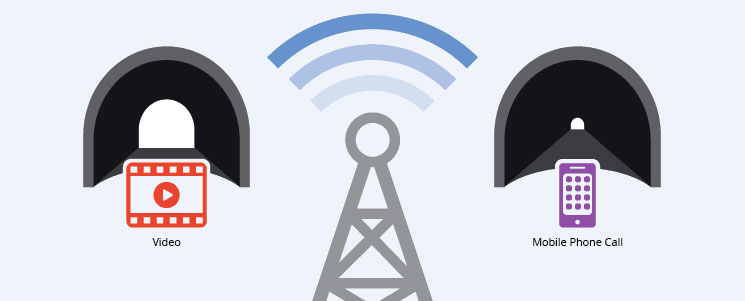Nowadays we take for granted how easy it is to make a phone call. We carry mini computers in our pockets that can contact any place in the world in real-time with a phone call or over the internet. Yet, with all that power we still end up with poor call quality all the time.
This is kind of ironic because it’s easier than ever to make phone calls, yet all that technology doesn’t guarantee a better calling experience.
Behind the scenes, telephony is incredibly complicated.
If you’re getting a lot of poor quality calls coming in, it’s good to know why.
Call Origins
Mobility is one the reasons why we rely on mobile phone so much. However, this same mobility can contribute to poor call quality.
Cell Phone Towers
When someone places a call on a mobile phone the first the radio in the phone does is contact their provider’s nearest phone tower. These phone towers handle tons of calls around the clock, but they only have a limited amount of bandwidth. So, once the call hits the tower, the tower determines how much bandwidth to allocate for the transfer of voice data.
Cell phone towers only have so much bandwidth to allocate so they tend to be conservative when doling it out. Video, for example, tends to be a higher priority than voice for providers. Video eats up a lot more of that finite bandwidth, too.
It seems that before anyone even begins dialing that they’re behind the 8-ball.
Audio Compression
This bandwidth decision is important because it affects how much compression is used on the audio for that call. A number of different audio codecs exist to perform this compression. One common codec is the Adaptive Multi-Rate (AMR) audio codec. This codec has several different compression rates it can use on a given call. The codec chooses the level of compression based on how much bandwidth is available from the tower handling the call.
If the tower is busy when the call is placed, the audio for that call will have more compression, which reduces the quality of the call. Also, once the compression level is established it’s set for the rest of the call. It doesn’t matter if more bandwidth becomes available during call.
Any problems that arise at this point in the phone call are near-end issues because they occur close to the point of origin.
It’s worth pointing out that calls made from landline phones (including SIP or VoIP) tend to not have these issues because they don’t face the same bandwidth challenges with respect to cell phone towers.
The In-Between
Once the tower figures out the bandwidth issue, it then connects the call to the PSTN. The call moves through the PSTN to the destination point. In the case of a Plum Voice IVR app, that would be one of our data centers.
The Destination
Our data centers are built specifically to handle high phone call volumes. We only use Tier 1 telecom to ensure that everything on our end is of the highest quality.
None of our components are wireless or rely on cell phone towers so we can ensure that incoming calls have the bandwidth necessary for clear phone calls.
If, for some reason, an issue occurred with one of our data centers that affected customer call quality then this would be considered a far-end issue because it happens far away, downstream from the origination point of the call.
Customer Considerations
If customers complain about call quality, you want to determine if this is a near- or far-end issue. An easy test would be to have callers try again from a landline. If this does not reproduce the call quality issues, then it was probably a near-end issue. Most of the time, call quality problems are near-end issues stemming from calls placed on a mobile device.
If the problem persists when calling from a landline, there may be a far-end issue. If you’ve ruled out a near-end issue and suspect a problem on our end, contact Plum support.

